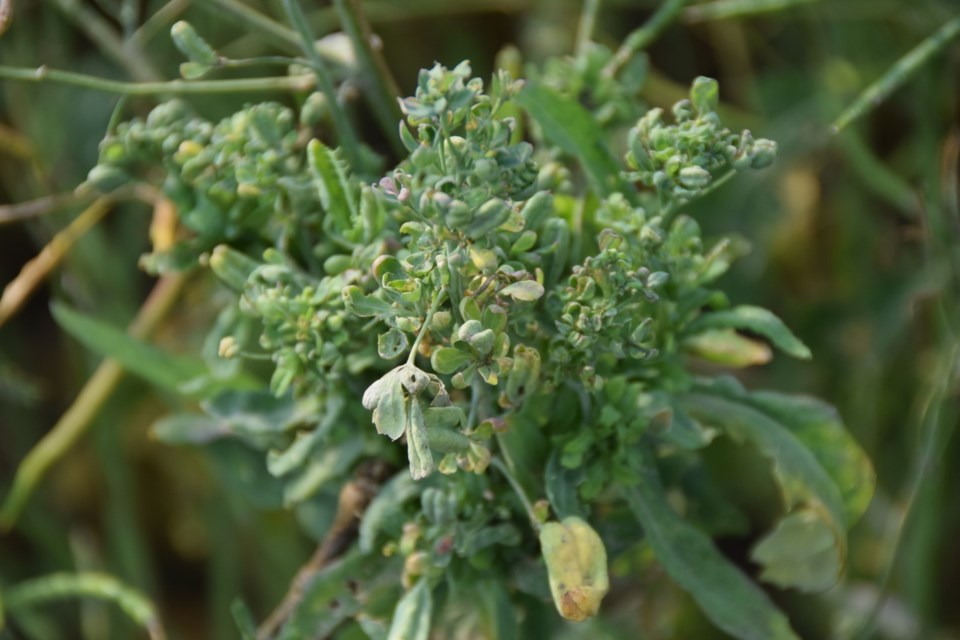SASKATOON — With Halloween upon us, are you worried about unseen forces, witches’ hexes and zombies sucking your life force? Well Agriculture and Agri-Food Canada research scientists can’t help you with that, but they can tell you about phytoplasmas, which do equally frightening things to plants.
It’s a tale that even involves a disease called witches’ broom.
Aster yellows is a phytoplasma disease that haunts important prairie crops like canola, flax and camelina. The disease is invisible to the naked eye and is spread by aster leafhoppers, an otherwise harmless insect that is possessed by the phytoplasma and transmits it to unsuspecting plants. The impact can be a farmer’s worst nightmare, depending on the plant. For example, in canola, aster yellows can cause the plant to send up so many branches that it looks like the broom of the Wicked Witch of the West. The disease can also cause flowers and seeds to turn into leaves which can have a ghastly impact on crop yield.
Deep in their lair at the Saskatoon Research and Development Centre, , a field crop entomologist, and , a microbiologist, are researching aster leafhopper insects and their parasitic pathogen. They have uncovered the shadowy world of aster yellows and ways to better detect their presence.
Drs. Wist and Dumonceaux and their colleagues are working together to track the migration of the aster leafhopper insect in the prairie provinces and the percentage of aster yellows infection among insects. To do this, AAFC scientists have developed their very own spectre detector that can identify the presence of aster yellows in just a half hour - and can be done outside of a laboratory. Early detection of high levels of infection the migratory leafhoppers is important because aster leafhoppers can live for a few months, spreading the disease as they move around and feed like zombies. The researchers are also looking at how to turn infection numbers into a risk index for crops like canola.
How do farmers combat an invisible threat? Much like paranormal investigators do: by monitoring for apparitions and spirit energy - or in this case, infected insects – and they don’t even have to do it at midnight! Dr. Wist advises that farmers can monitor populations of aster leafhoppers near their fields in the spring using a sweep net and then send caught leafhoppers to Dr. Tyler Wist at the Saskatoon Research and Development Centre for aster yellows phytoplasma testing. If necessary, crops can also be sprayed to control aster leafhopper populations. The aster yellows research project determined that early-season insecticidal seed treatments protect young canola plants from leafhopper feeding and therefore reduces the transmission of aster yellows phytoplasma. In a year which has been bad for aster yellows, this may have kept the number of infected canola plants to a much lower level than expected. Moving forward, Drs. Wist and Dumonceaux would like to continue advancing this research in order to better understand the risk to crops based on number of leafhoppers and percent infection.
Learn more:
— Submitted by Saskatoon Research and Development Centre




